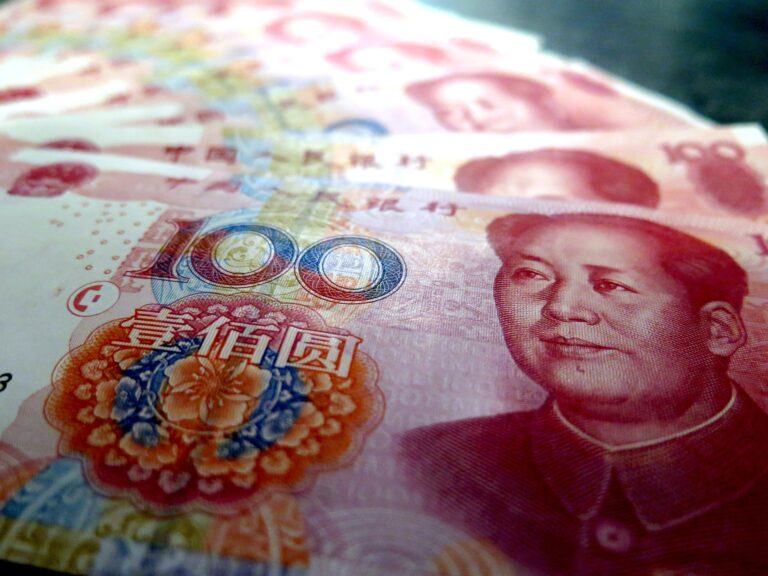Despite moderating its pace slightly in January 2024, the People’s Bank of China (PBOC) remains a significant player in the global gold market.
As Neils Christensen reported for Kitco News earlier today, the Chinese central bank purchased another 10 tonnes of gold in January. This purchase represents the 15th consecutive month of increasing official gold reserves, although the quantity acquired is notably lower than its recent buying pattern.
According to market analyst Krishan Gopaul at the World Gold Council, cited by Kitco News, China’s official gold holdings surged to 2,245 tonnes following January’s acquisition. This represents an increase of nearly 300 tonnes since the PBOC accelerated its gold-purchasing program in November 2022.
While the buying spree’s intensity has eased, analysts interviewed by Kitco News anticipate China will continue accumulating gold to diversify its reserves. Currently, Chinese gold holdings comprise approximately 4% of its total reserves, a figure substantially less than many developed nations’ central banks. However, there’s significant room for this proportion to increase in line with other major economies.
George Milling-Stanley, chief gold strategist at State Street Global Advisors, highlighted in a Kitco News interview that Chinese citizens are following the trend initiated by their central bank. In the lead-up to the Chinese New Year, demand for physical gold surged within the country. Withdrawals from the Shanghai Gold Exchange during January 2024 climbed to record highs, marking the second-highest monthly volume in history.
Milling-Stanley emphasized that this hunger for gold aligns with its traditional role as a safe-haven asset in times of economic uncertainty. Gold possesses a unique potential to both stabilize portfolios and deliver long-term performance, a vital feature during China’s ongoing economic recovery.
In an article published by Kitco News on January 31, the spotlight was cast on the evolving landscape of precious metals investment, particularly gold, amidst the backdrop of a recovering cryptocurrency market. That article delves into the shifting demographics of gold investors, contrasting the traditional older generation of gold enthusiasts with the emerging interest from younger demographics, notably in China and among Millennials in the West.
Despite gold’s longstanding status as a safe-haven asset, it constitutes a mere 1% of global investment assets, categorizing it as an ‘alternative’ asset. This is juxtaposed with the cryptocurrency market’s resurgence, highlighted by Bitcoin’s impressive 150% increase in 2023 and the total crypto market cap doubling the previous year. The enthusiasm for cryptocurrencies, especially the recent spot Bitcoin ETF frenzy, starkly contrasts with the continuous outflows from gold ETFs, signaling a potential shift in investment preferences across different age groups.
The article points to a significant demographic shift in China, the world’s largest gold market, where younger generations, particularly those born after the 1990s, are increasingly becoming the primary consumers of gold jewelry. This shift is supported by data from leading e-commerce platforms Tmall and Taobao, as well as an insight report by consultancy firm Mob Data, which indicates a surge in Gen Z’s inclination to purchase gold from 16% in 2016 to 59% in 2021. This trend is not isolated to China; in the West, Millennials have shown a growing interest in gold investment, surpassing Generation X and Baby Boomers with an average allocation to gold at 17%.
The article raises the question of whether this marks the beginning of a youth boom in precious metals investment. Jeffrey Christian, Managing Director of the CPM Group, offers a tempered view, suggesting that while there has been intermittent interest from younger demographics in gold and silver, it has not been persistent. He recounts a period in the mid-2010s when younger investors turned to gold and silver amidst low interest rates and skepticism towards the stock market. However, this interest waned, and Millennials have since diversified into other assets.
Christian also highlights the challenges younger investors face when considering precious metals investment, such as a lack of clear information and the tendency of mainstream banks and brokerages to steer them towards mining stocks or precious metals ETFs instead of physical metals. This, combined with often confusing narratives found online, discourages younger investors from pursuing precious metals.
Despite these challenges, the case for young people investing in precious metals remains strong, driven by concerns over inflation, currency debasement, and the desire for tangible assets to protect against economic and political uncertainties. The article suggests that the cryptocurrency market, often viewed as a competitor to gold, may actually serve as a bridge, introducing younger investors to the merits of gold as an asset class.
Featured Image via Pixabay









